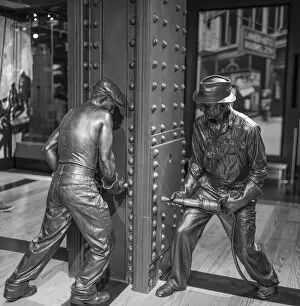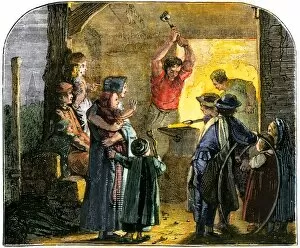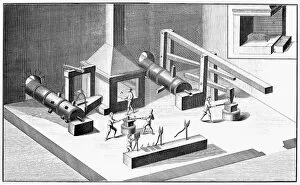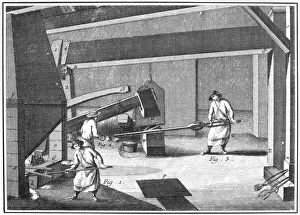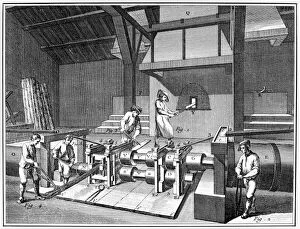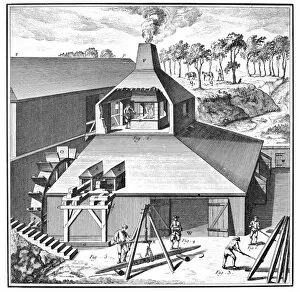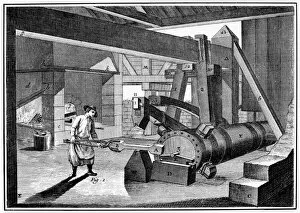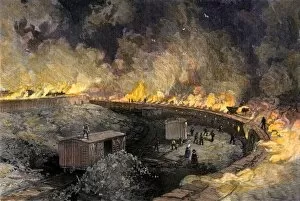Iron Worker Collection
Skilled craftsmen pause beside two pairs of elaborately designed iron beams
All Professionally Made to Order for Quick Shipping
Skilled craftsmen pause beside two pairs of elaborately designed iron beams, their hard hats gleaming in the sunlight as they work on the iconic Empire State Building in New York City. The hot work involved in shaping and forging these massive structures showcases the expertise of these iron workers, who are part of a long-standing tradition dating back to the late 19th century. In a historic lithograph from that era, we catch a glimpse of the Paterson Iron Company in Paterson, New Jersey. Steamboat and railroad forgings take center stage, highlighting the vital role played by iron workers in constructing transportation infrastructure during this time. Traveling back even further to mid-18th century France, we witness an intricate process captured in a line engraving. Bar iron is meticulously forged and hammered into sheets before being plated – a testament to the meticulous craftsmanship required for tin plate manufacture. Meanwhile, across the Atlantic Ocean at Richmond's Tredegar Iron Works in Virginia circa 1887, wood engravings showcase another facet of iron working history. These images depict bustling scenes where molten metal is transformed into various industrial products under intense heat and pressure. The dedication and skill exhibited by these metalworkers throughout history are evident even as far back as 18th-century France. In one engraving, sheet iron is carefully cleaned before being dipped into molten tin – an essential step towards creating high-quality finished products. Iron working has not only shaped architectural landmarks like the Empire State Building but also attracted royal attention. Queen Victoria and Prince Albert themselves visited an iron mine in Cornwall during September 1846 – emphasizing its significance both industrially and culturally. Finally, returning to France once again through another line engraving from mid-18th century archives; we witness an intriguing technique employed during casting: cold water is poured onto freshly hammered blooms to assist with scaling off impurities - showcasing innovative methods used by skilled French artisans centuries ago.


